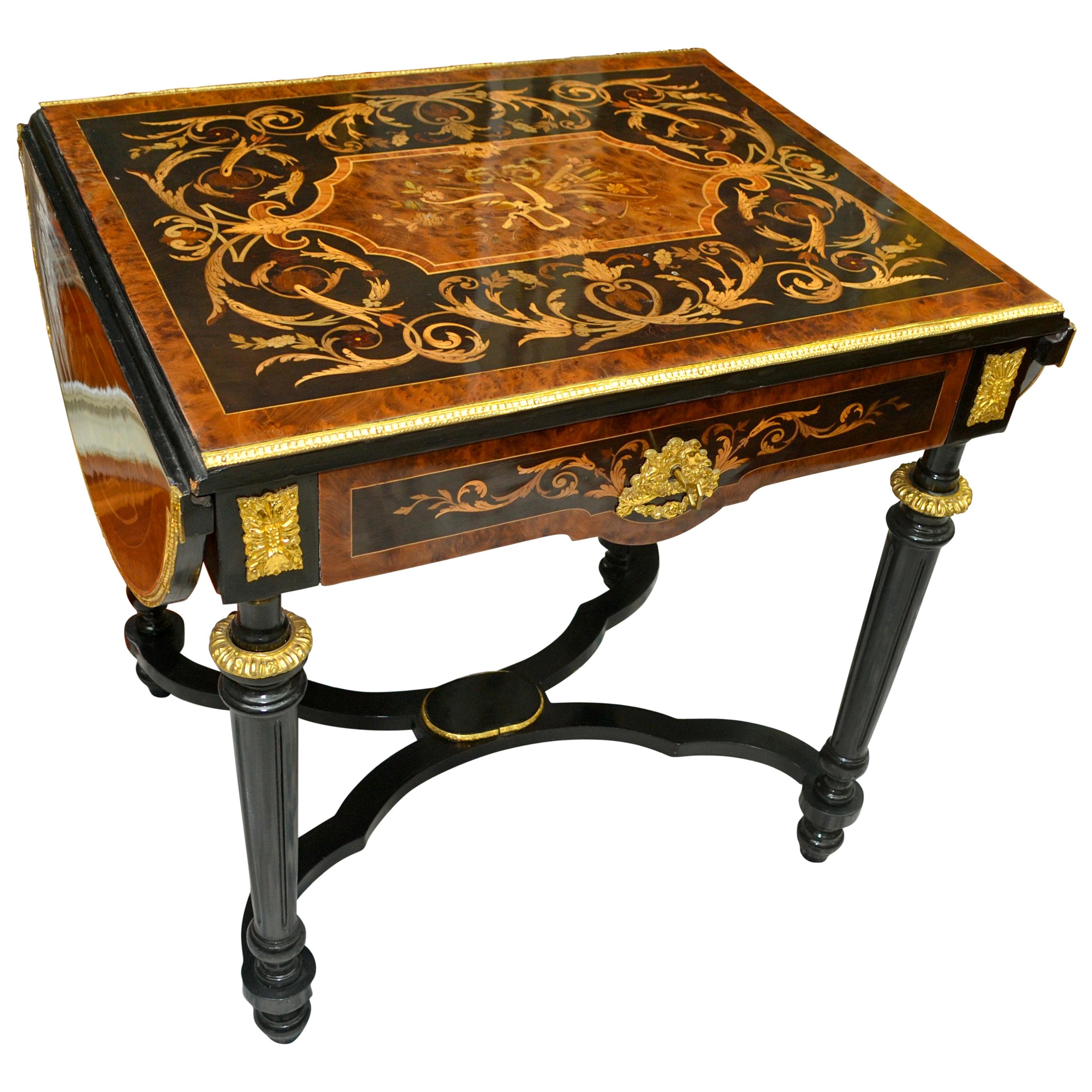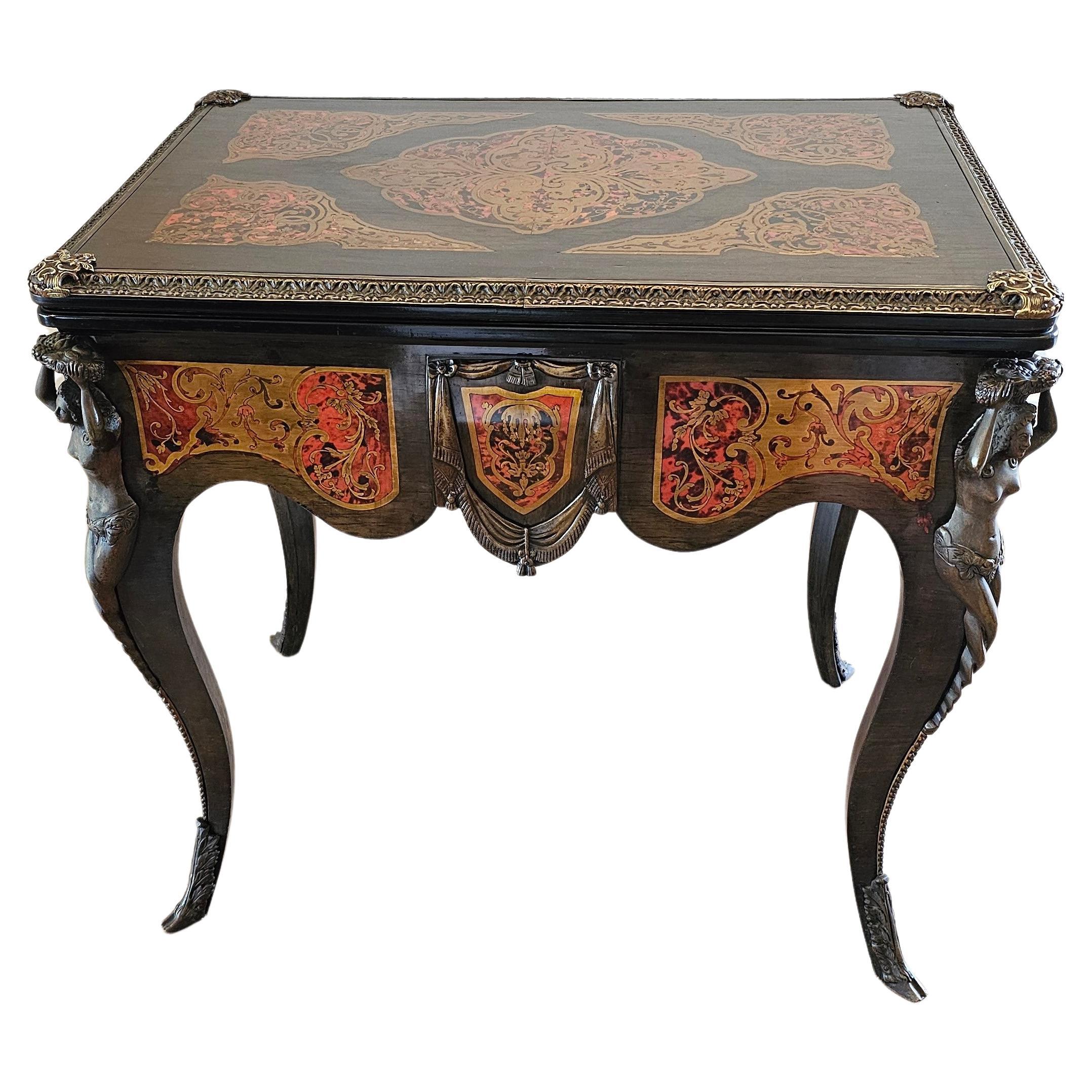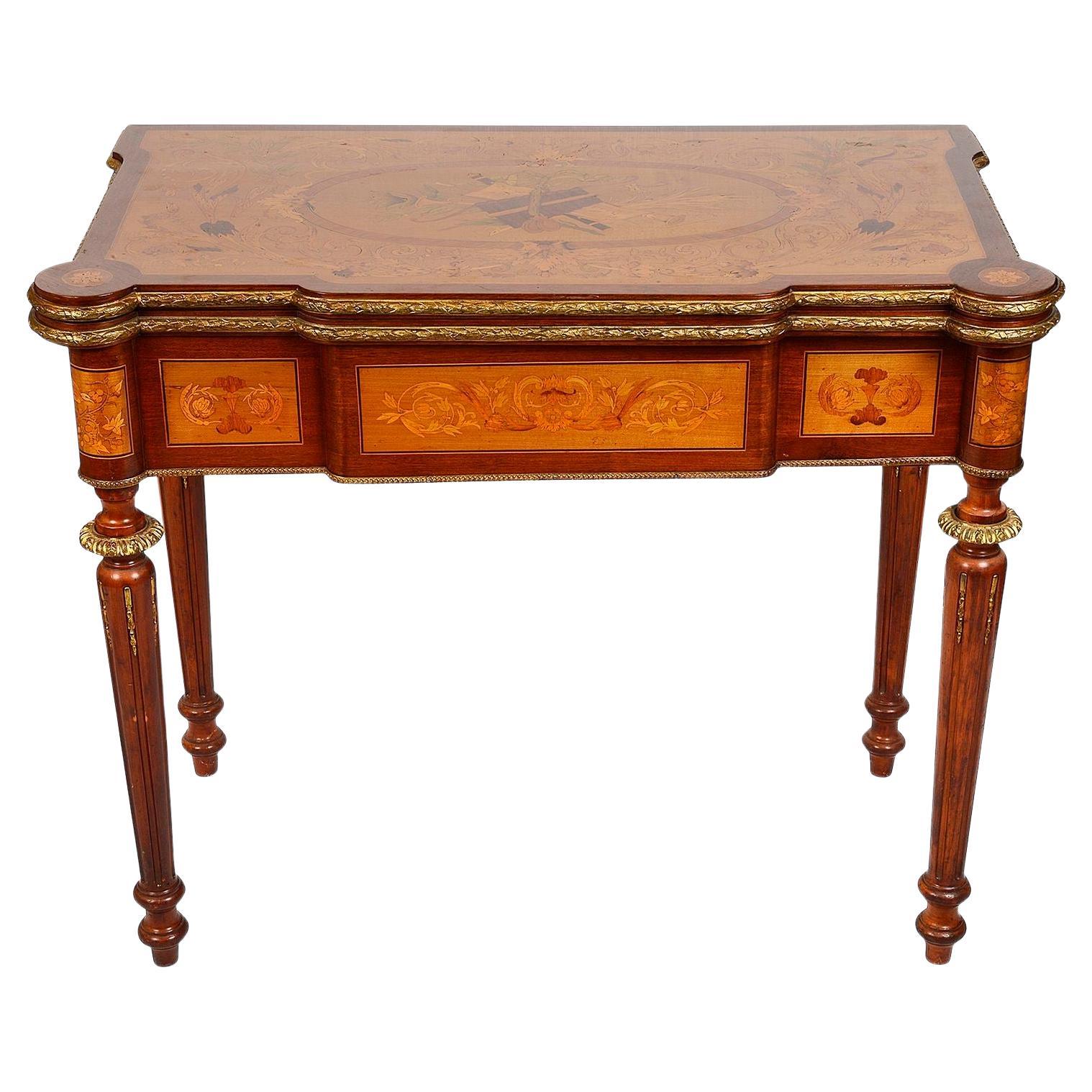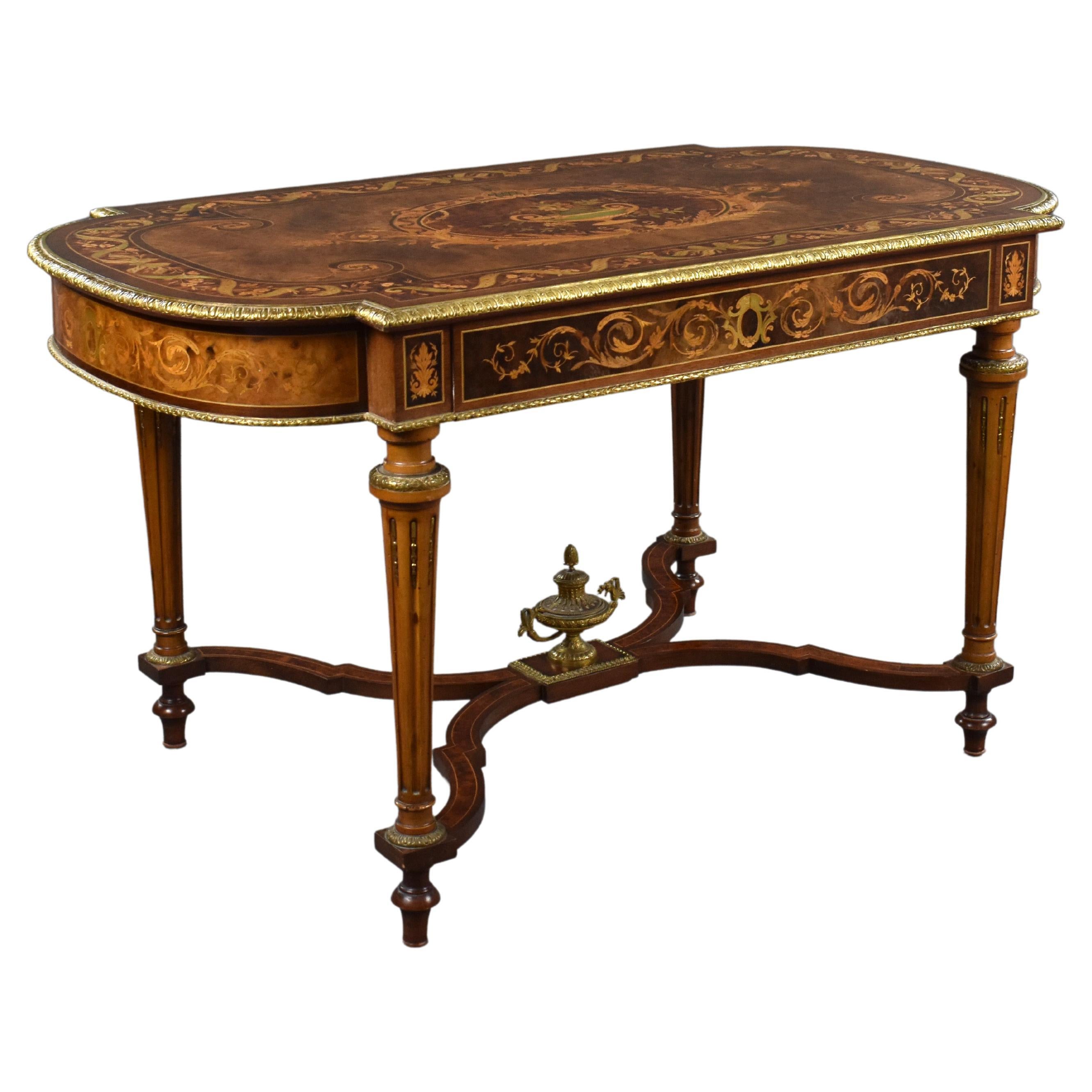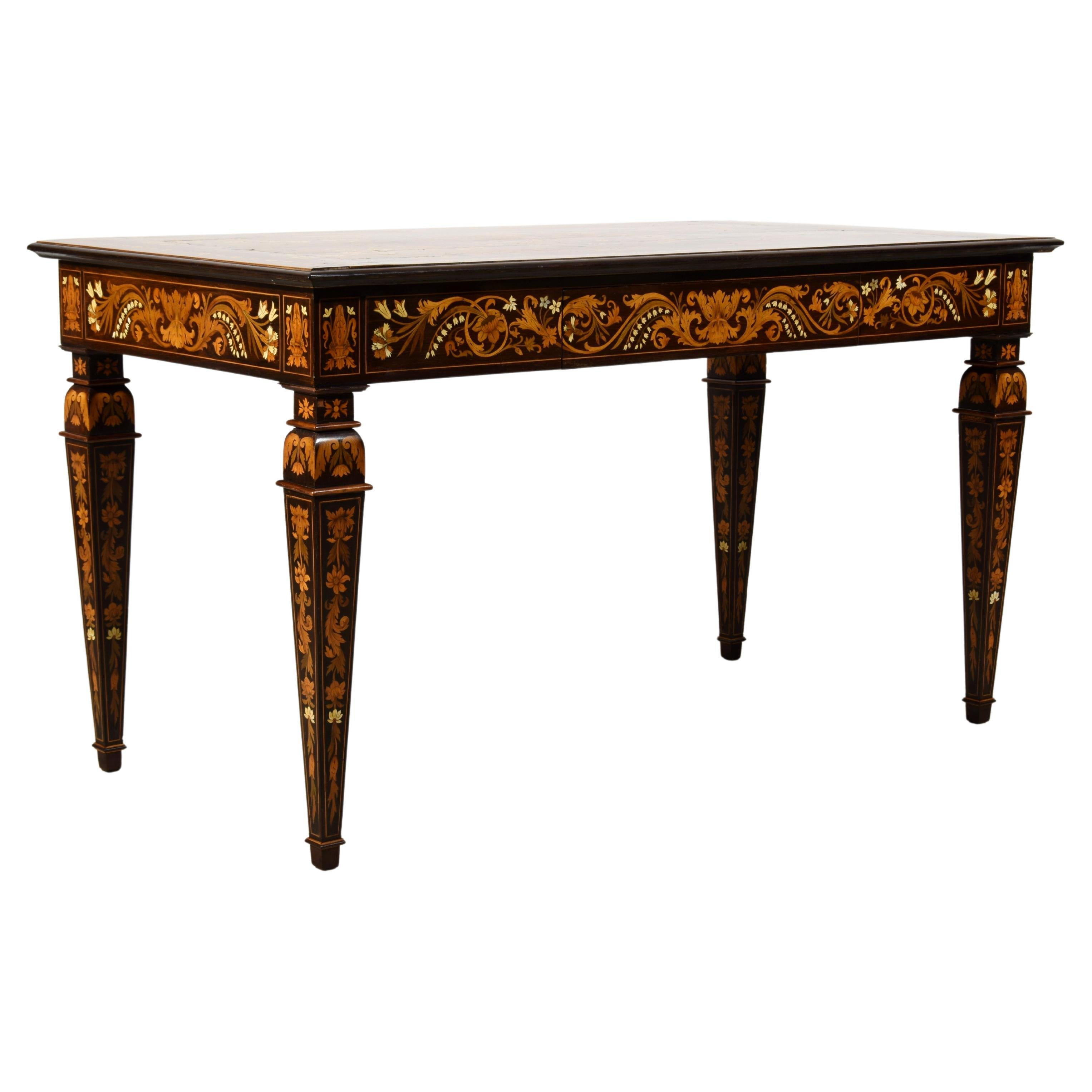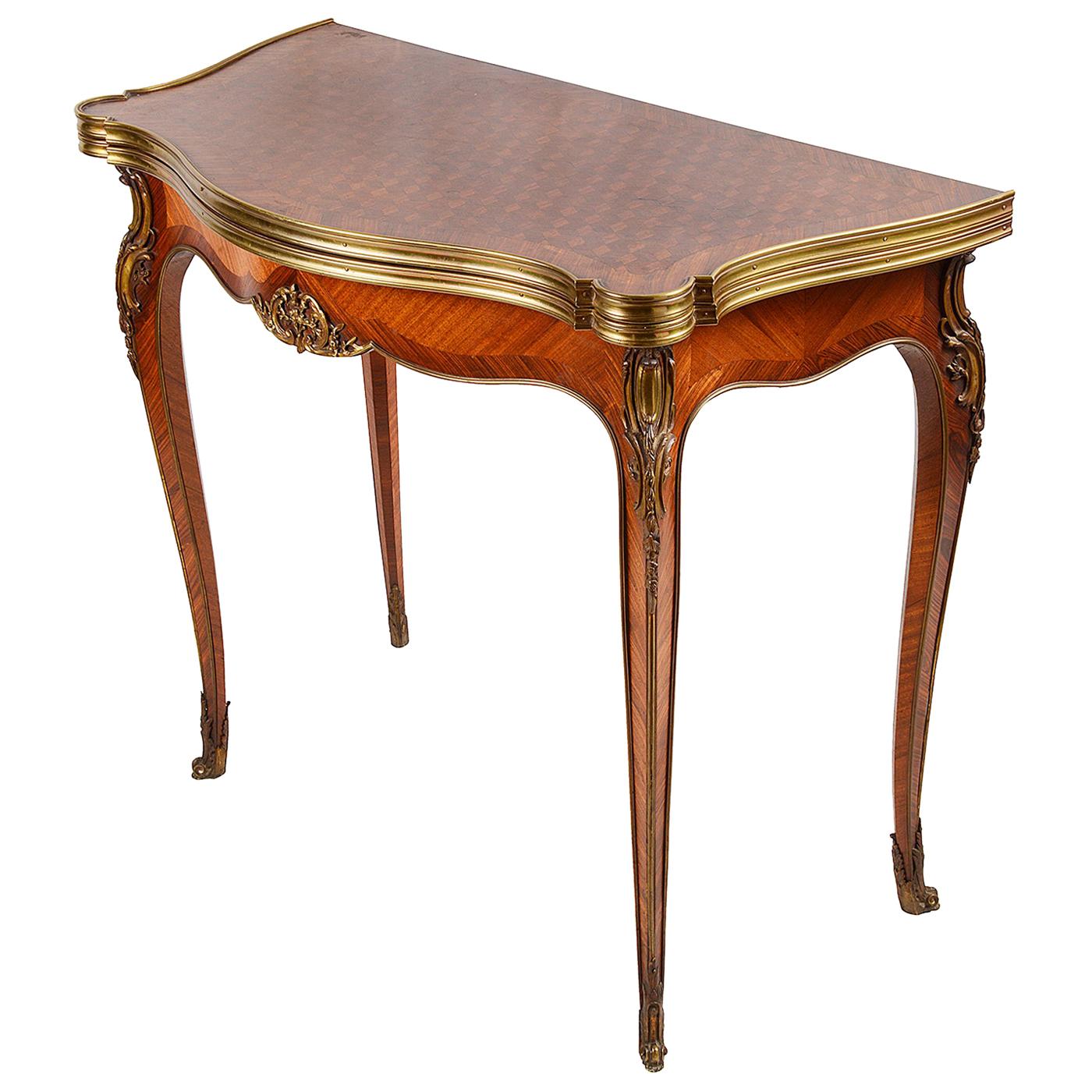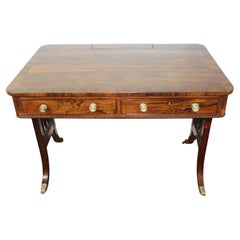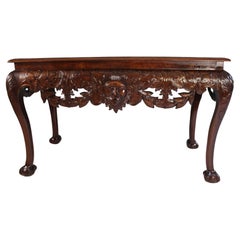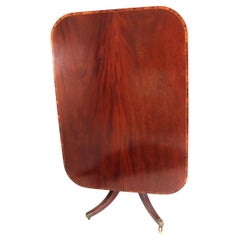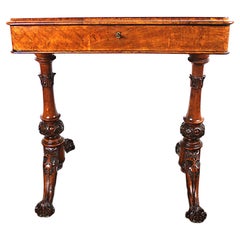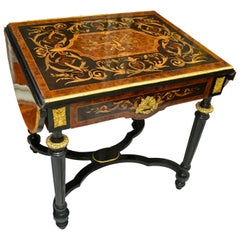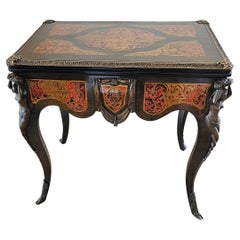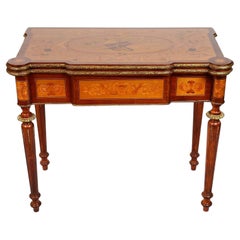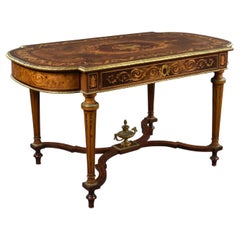Items Similar to Antique French Napoleon III Inlaid Card Table
Want more images or videos?
Request additional images or videos from the seller
1 of 12
Antique French Napoleon III Inlaid Card Table
$1,604.36
$2,005.4520% Off
£1,160
£1,45020% Off
€1,370.68
€1,713.3520% Off
CA$2,217.47
CA$2,771.8320% Off
A$2,465.97
A$3,082.4620% Off
CHF 1,294.07
CHF 1,617.5820% Off
MX$30,071.34
MX$37,589.1720% Off
NOK 16,357.45
NOK 20,446.8220% Off
SEK 15,335.76
SEK 19,169.7020% Off
DKK 10,230.61
DKK 12,788.2620% Off
About the Item
Antique French Napoleon III Inlaid Card Table
📜 Provenance – Napoleon III Period Inlaid Card Table, France, circa 1860
Sourced from a private collection in Lyon, this exceptional French Napoleon III inlaid card table, dating to circa 1860, represents the finest decorative traditions of Second Empire craftsmanship. The table’s distinctive sarcophagus form, refined proportions, and extraordinary marquetry reflect the opulent aesthetics of Napoleon III’s reign, a period synonymous with ornamental luxury and precision artistry.
Crafted from ebonised walnut and adorned with intricate inlay in brass and mother-of-pearl, the piece centres around a cartouche of classical foliate motifs — a hallmark of high-style French furniture design of the mid-19th century. Its fluted tapering legs and stylized bronze mounts are equally elegant, offering both visual harmony and architectural balance.
The hinged top opens to reveal a well-preserved, green baize-lined interior playing surface, accommodating up to four players. This dual-purpose functionality — decorative console and fold-out card table — speaks to the multifunctional design language of the period.
The piece has been gently conserved: lightly cleaned, waxed, and structurally sound with original detailing retained. Minor surface wear and light scratches to the ebonized finish are consistent with its age and enhance the authenticity of the piece.
Ideal for collectors of French Empire or Napoleon III-era furnishings, this table is also well suited for refined interiors, boutique hotel lounges, or curated salons seeking a historically rich yet practical centrepiece.
The Antique French Napoleon III Inlaid Card Table is a stunning example of 19th-century craftsmanship and design. To begin with, this exquisite piece features an extending ebonised and walnut construction. Additionally, it is adorned with intricate brass and mother-of-pearl inlay set within a central cartouche. Furthermore, its luxurious details include stylised bronze mounts and a frieze with mother-of-pearl foliate patterns. Finally, the table rests on elegant, ebonised fluted legs that taper into delicate peg feet, seamlessly combining function and artistry.
To ensure its natural beauty is preserved, the table has been lightly cleaned and polished with antique wax, making it ready for immediate display or use.
A Work of Art and Function
The French Napoleon III Inlaid Card Table not only serves as a functional piece of furniture but also stands as a work of art. Specifically, it was produced during Napoleon III’s reign in France (1852–1870), a time known for its emphasis on refined craftsmanship and ornate designs. These card tables were especially admired in the 19th century because of their intricate detailing and practical design.
Moreover, the table’s ability to combine aesthetics with utility makes it an ideal centrepiece for any sophisticated space.
Key Features of the Antique French Napoleon III Inlaid Card Table
Intricate Inlay Work: First and foremost, the table showcases detailed marquetry crafted from exotic woods such as rosewood, satinwood, and ebony.
Stylised Bronze Mounts: In addition, elegant bronze mounts further enhance its luxurious appearance.
Functional Design: Most importantly, the hinged top reveals a baize-lined playing surface, making it perfect for card games.
A Brief History of Napoleon III Card Tables
The Napoleon III Inlaid Card Table is a prime example of French Empire-style furniture. Historically, this style gained prominence during Napoleon Bonaparte's reign and continued into Napoleon III's era. As a result, these tables became synonymous with opulence, featuring grandeur, intricate carvings, and stunning inlay work.
What’s more, these tables were produced during a period of political and cultural transformation in France. Therefore, they are not only functional furniture but also significant historical artefacts. Today, collectors and enthusiasts highly prize these tables for their elegance, rarity, and connection to the artistry of the time.
Design and Practicality
This rectangular table was designed with both beauty and functionality in mind. For instance, its hinged top opens to reveal a green baize-lined surface, which is ideal for card games and comfortably accommodates up to four players. When not in use, the table folds compactly, making it both practical and stylish.
Additionally, the table’s dual-purpose design ensures it can serve as a decorative statement piece while also offering practical functionality.
Condition Report
The Antique French Napoleon III Inlaid Card Table is in good antique condition. Although the ebonized top has a few light scratches, these imperfections are minor and consistent with its age. More importantly, they do not detract from its overall charm or value. Consequently, the table remains a remarkable addition to any collection or sophisticated space.
Conclusion
In summary, the French Napoleon III Inlaid Card Table is a true masterpiece. With its intricate design, historical significance, and dual-purpose functionality, it effortlessly combines beauty and practicality. Whether displayed as a decorative centrepiece or used for its original purpose, this table adds sophistication, charm, and history to any setting.
- Dimensions:Height: 28.35 in (72 cm)Width: 17.72 in (45 cm)Depth: 16.54 in (42 cm)
- Style:Napoleon III (Of the Period)
- Materials and Techniques:
- Place of Origin:
- Period:
- Date of Manufacture:1850s
- Condition:Wear consistent with age and use.
- Seller Location:Seaford, GB
- Reference Number:1stDibs: LU10376244494172
About the Seller
New to 1stDibs
Joined in the past six months.
No Reviews Yet
Vetted Professional Seller
Every seller passes strict standards for authenticity and reliability
Established in 2021
1stDibs seller since 2025
Typical response time: 7 hours
- ShippingRetrieving quote...Shipping from: Seaford, United Kingdom
- Return Policy
Authenticity Guarantee
In the unlikely event there’s an issue with an item’s authenticity, contact us within 1 year for a full refund. DetailsMoney-Back Guarantee
If your item is not as described, is damaged in transit, or does not arrive, contact us within 7 days for a full refund. Details24-Hour Cancellation
You have a 24-hour grace period in which to reconsider your purchase, with no questions asked.Vetted Professional Sellers
Our world-class sellers must adhere to strict standards for service and quality, maintaining the integrity of our listings.Price-Match Guarantee
If you find that a seller listed the same item for a lower price elsewhere, we’ll match it.Trusted Global Delivery
Our best-in-class carrier network provides specialized shipping options worldwide, including custom delivery.More From This Seller
View All19th century Rosewood Writing Table
By Gillows of Lancaster & London
Located in Seaford, GB
Manner of Gillows Regency Rosewood Library Table
Regency Craftsmanship
This superb Regency rosewood library or writing table is a stunning example of craftsmanship and elegance, e...
Category
Antique Early 19th Century British Regency Desks and Writing Tables
Materials
Brass
Irish George II style mahogany Serving table
By James Hicks
Located in Seaford, GB
Irish George II-Style Mahogany Side Table – A Masterpiece of Antique Furniture in Sussex
This Irish George II-style mahogany side table exemplifies late 19th century craftsmanship i...
Category
Antique 1890s Irish George II Serving Tables
Materials
Mahogany
19th Century English Regency Mahogany Dining Table
Located in Seaford, GB
Regency Mahogany Dining /Breakfast Table
This early 19th-century Regency Mahogany Breakfast Table showcases a classic rectangular shape, making it perfect for both dining and casual...
Category
Antique 1810s English Regency Dining Room Tables
Materials
Tulipwood
Victorian Pollard Oak English Work Table
Located in Seaford, GB
9th-century English Pollard oak work table
This exquisite 19th-century English pollard oak work table has a lovely colour and patina. It's a remarkable example of craftsmanship, wit...
Category
Antique Late 19th Century English High Victorian Industrial and Work Tables
Materials
Oak
Federal Massachusetts Cuban mahogany dining table
Located in Seaford, GB
Massachusetts Cuban mahogany dining table
Period: Federal
Date: 1810
Place of Manufacturer: Salem, Massachusetts
Made of: Cuban Mahogany
Conditio...
Category
Antique Early 19th Century Federal Dining Room Tables
Materials
Mahogany
George III Sheraton Mahogany & Satin Tripod Table
Located in Seaford, GB
Sheraton 18th-century mahogany tripod Table
This George III Sheraton 18th-century mahogany tripod table is an exceptional example of Georgian furniture and a fine piece of antique E...
Category
Antique Late 18th Century English George III Dessert Tables and Tilt-top...
Materials
Mahogany, Satinwood
You May Also Like
Napoleon III Inlaid Wood and Gilt Bronze Mounted Drop-Leaf Table
Located in Vancouver, British Columbia
A beautifully inlaid and ebonized French centre table from the Napoleon III Era or third quarter of the 19th century. The table rests on four turned ebonized legs joined at the botto...
Category
Antique Late 19th Century French Napoleon III Center Tables
Materials
Ebony, Kingwood
French Napoleon III Period Boulle Inlaid fliptop Games Table
By André-Charles Boulle
Located in Forney, TX
A fine French Napoleon III Second Empire Period (1852-1870) fliptop card game table.
Make a statement with this striking example of high-quality Parisian craftsmanship. Exquisitel...
Category
Antique 19th Century French Napoleon III Game Tables
Materials
Brass, Bronze
French 19th Century marquetry inlaid card table.
Located in Brighton, Sussex
A very good quality French 19th Century marquetry inlaid card table, having musical instruments, ribbons and scrolling foliat...
Category
Antique Late 19th Century French Louis XVI Card Tables and Tea Tables
Materials
Mahogany
19th Century French Napoleon III Marquetry Centre Table
Located in Chelmsford, Essex
For sale is a fine quality 19th century French marquetry centre table, the top vneered and profusely inlayed with burr walnut, burr yew, ...
Category
Antique Mid-19th Century French Napoleon III Center Tables
Materials
Brass
19th Century, Italian Inlaid Wood Centre Table by Luigi and Angiolo Falcini
By Luigi and Angelo Falcini
Located in IT
19th Century, Italian Inlaid Wood Centre Table by Luigi and Angiolo Falcini
This valuable center table in rosewood veneer and inlaid, was ma...
Category
Antique Mid-19th Century European Napoleon III Center Tables
Materials
Wood
French Louis XVI Style Inlaid Card or Games Table, circa 1880
Located in Brighton, Sussex
A good quality late 19th century Louis XVI style parquetry inlaid serpentine fronted card or games table, having gilded ormolu moldings and mounts, the top hinging open to reveal the...
Category
Antique Late 19th Century French Louis XVI Card Tables and Tea Tables
Materials
Mahogany
More Ways To Browse
Napoleon Iii Ebonized
Antique Utility Table
Inlay Folding Table
Brass Inlaid Game Table
Mid Century Fold Out Table
Second Empire Table
Mother Of Pearl With Marquetry
Rosewood Centre Table
Napoleon Iii Ebony
Walnut Antique Game Table
Ebony Wood Carving
Napoleon Inlay Table
Card Players
19th Century French Napoleon Iii Table With Brass
French Inlaid Game Table
French Folding Game Table
Mid Century Rosewood Console Table
Antique Brass Inlayed Rosewood Table
